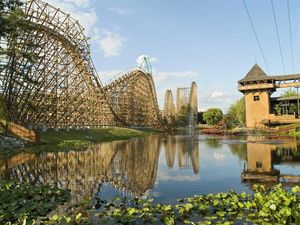Can large-scale solar installations coexist with agriculture in rural America?
DENVER, Aug. 14, 2025 (GLOBE NEWSWIRE) -- Local opposition to utility-scale solar installations in rural areas is growing following the rapid pace of new solar developments in recent years. Concerns about land use in areas largely dominated by agricultural production are fueling much of the community-level resistance. With crop production revenue currently under intense pressure and subject to annual volatility, some landowners are welcoming the more consistent revenue advantages of solar land-lease payments. But wider opposition could stymie additional solar developments in rural areas, slowing growth in the U.S. energy supply.
According to a new report from CoBank’s Knowledge Exchange, solar expansion could deliver the fastest, most affordable means for increasing the nation’s razor-thin energy reserves while driving new revenue streams for rural communities. However, success will be dependent on regional policy and site planning guidelines that ensure the local communities’ needs and interests are prioritized. The report is the first in a series of upcoming research articles and part of The New Golden Age of Electricity digital hub about rising energy scarcity and securing future power supply for rural America.
“Concerns surrounding the pace of solar developments in rural areas and the implications for land use in agricultural regions are warranted,” said Teri Viswanath, lead power, energy and water economist with CoBank. “But there are guardrails to reduce the risk of land use tensions and other conflicts that would enable landowners and rural communities to capture the financial benefits of solar projects without displacing or disturbing agriculture farmland.”
Growing resistance to solar installations in rural communities is likely in response to the speedy development that has already taken place and concerns about what future construction might look like. More than one-half of all U.S. solar installations have materialized since 2020, with 25% of that development occurring since the passage of the Inflation Reduction Act in 2022.
Solar energy generation can be installed at a rate five times faster than all other new electricity sources combined and remains the lowest cost solution to expanding energy supplies, even without government subsidies. While federal policy has recently become much less supportive of renewable energy and tax credits are now limited, the costs of solar development remain favorable. The biggest headwind for expanding solar energy production is local opposition.
A recent analysis by USA TODAY found that around 15% of counties in the U.S. have some form of restriction on building new utility-scale solar energy projects. This includes outright bans, zoning restrictions, specialized land-use rules or political stonewalls. At least 395 local restrictions across 41 states, in addition to 19 state-level restrictions, are so severe that they effectively block renewable development in these areas.
In rural areas, solar development occurring on prime farmland has had an outsized negative influence from the community perspective. To rectify that trend, American Farmland Trust and the American Farm Bureau have recommended a set of guardrails that would prevent the solar industry from siting developments on prime agricultural land. Those recommendations include prioritizing solar power on shared agricultural land or marginal and brownfield sites, offering a more acceptable pathway for rural communities and landowners to capture the benefits of tax revenue and lease payments. The report also notes that economies of scale and high costs are major reasons why simply installing solar on existing rooftops is not a feasible answer.
Successful efforts to balance local community interests with solar development have the potential to pay off handsomely. According to data collected by the American Clean Power Association, a recurring $739 million came back to communities last year in the form of state and local taxes and land-lease payments.
“Regardless of the pace of solar development ahead, future installations will inevitably affect local communities so more engagement from the solar industry is needed,” said Viswanath. “Strengthening partnerships with agricultural stakeholders and implementing effective land management strategies will be critical to mitigating challenges and gaining acceptance. Solar power is essential for meeting near-term demand growth, and rural America can play a key role in this while diversifying farm income and benefiting local communities through additional tax revenue.”
Read the report, Reassessing Solar Power’s Contribution.
About CoBank
CoBank is a cooperative bank serving vital industries across rural America. The bank provides loans, leases, export financing and other financial services to agribusinesses and rural power, water and communications providers in all 50 states. The bank also provides wholesale loans and other financial services to affiliated Farm Credit associations serving more than 78,000 farmers, ranchers and other rural borrowers in 23 states around the country. CoBank is a member of the Farm Credit System, a nationwide network of banks and retail lending associations chartered to support the borrowing needs of U.S. agriculture, rural infrastructure and rural communities. Headquartered outside Denver, Colorado, CoBank serves customers from regional banking centers across the U.S. and also maintains an international representative office in Singapore.

Corporate Communications CoBank 800-542-8072 news@cobank.com
More News
View More




Recent Quotes
View More
Quotes delayed at least 20 minutes.
By accessing this page, you agree to the Privacy Policy and Terms Of Service.